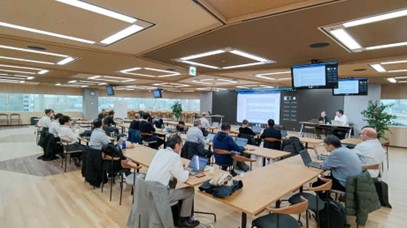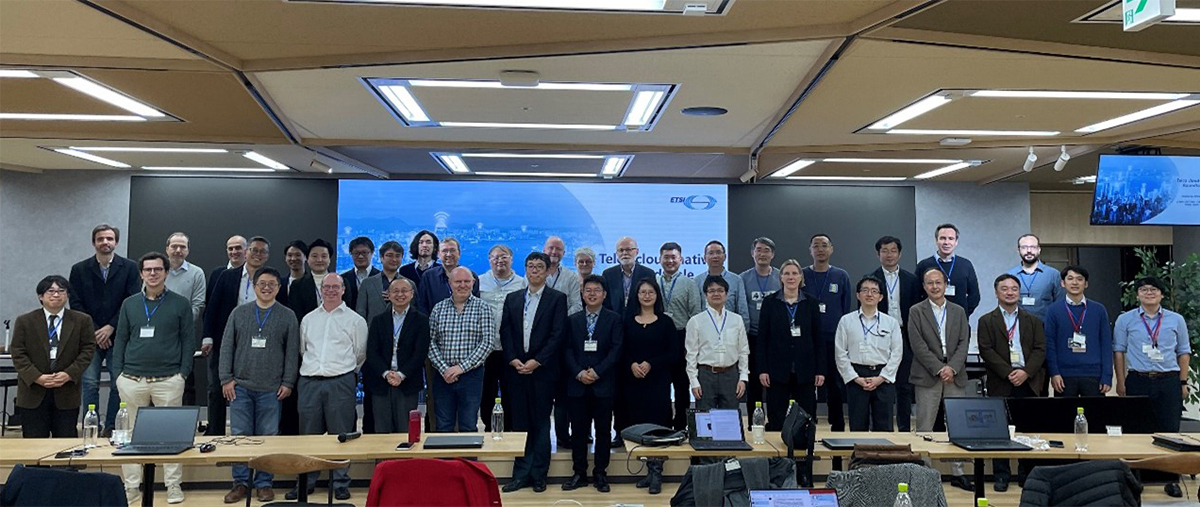NFV#44
As in recent plenary meetings, the agenda during the week was fully packed between regular plenary sessions, WG meetings and other more industry-driven events. Regarding the later, it is worth highlighting the following couple of events. Firstly, the 3rd Telco Cloud Roundtable, which took place on Monday afternoon, and gathered regular ETSI NFV meeting delegates with delegates from the industry, like network operators, academia, and open source community. Representing network operators, we had the pleasure to welcome Hajime Miyamoto (KDDI), Hiroki Baba (NTT), Jian Xu (China Mobile), Yusuke Takano (Softbank) and Tatsuya Toyama (Rakuten Mobile); from academia, professor Dr. Yuji Sekiya of University of Tokyo, and from the open source community, Ranny Haiby, CTO of The Linux Foundation.
Feedback from network operator's development and network integration using NFV technologies, as well as more forward looking perspectives of NFV technologies were nicely shared and discussed during the roundtable. More information about the roundtable is available in this other [blogpost of roundtable].
Secondly, a dedicated workshop between ETSI NFV and LFN's Nephio project was also held on Wednesday, to seek the potential collaboration points between both standards and opensource. The workshop was very timely considering the activities of both organizations in areas like automation, support for virtualization of RAN and Telco Cloud platform services. ETSI NFV is looking forward to collaborating with opensource communities to bring further alignment between standards and opensource for the benefit of the whole telecom industry.

Figure 2: Plenary session during NFV#44
On the more technical side, the ISG confirmed transferring the major focus of work from Release 4 to both Release 5 and Release 6. Publication ed451 is declared to be the final version of Release 4 in terms of feature development, and ed461 is expected to be only bugfix. Closing Release 4 will free up more resources to develop and keep on track the Release 5 normative work and Release 6 informative work.
During NFV#44, several work items managed by respective WGs have been discussed and progressed. It is worth highlighting the good progress achieved in Release 5 normative work of technical features FEAT21 on "NFV support for 5G", which further progressed the development of the PaaS Services framework, FEAT24 on "VNF Generic OAM", FEAT29 on "Green NFV", FEAT27 on "NFV for vRAN", FEAT19a on "container networking enhancements" and ENH01.01 on "Certificate Management". At a stage 3 level, further progress was done in FEAT21 "5GNFV" and FEAT17 "container support", in addition to FEAT31 on "Flexible VNF deployment" and FEAT28 "FM/alarm modeling". Regarding the informative work, the early studies on Release 6 continued their steady progress, mainly regarding FEAT39 on "architectural support for NFV evolution", which is tasked to establish the principles for a new simpler, interoperable and stable NFV architecture, and FEAT36 on "new infrastructure resources". In addition, the informative work item of FEAT22 on "multi-tenancy in NFV" was pushed closer to be declared stable in the coming weeks.
Open source activity was again well represented by the OpenStack Tacker community, with various delegates attending the meeting on-site, who provided technical feedback to ETSI NFV related to authentication of callback URI. Such a discussion took place in a joint EVE-IFA-SOL WG session held on Thursday morning.
Last, but not least, the ISG also discussed about its prospects. At a dedicated plenary session in the morning of the closing day, important discussion regarding the ISG's mission and terms of reference, as well as the potential restructure of the WGs, was held. The proposal of merging REL and TST activities into other WGs was presented by the TSC, which was extensively discussed, while reaching a general consensus of the needs to optimize the WG structure of the ISG. The new structure will have to be ratified by ISG consensus, but if approved, it will mean that all technical activity of the ISG will then take place in these four existing WGs: EVE, concentrating on informative and stage 1-level work: IFA, continuing to develop the stage 2-level work; SOL, in addition to continuing its task to develop the stage 3 work, would include related testing activities; and SEC, also continuing its task to develop the security related aspects around NFV. Further information about the ISG restructure will be shared in due time in future ISG announcements.
During the closing plenary, the set of 12 final drafts of SOL work items and also SEC022 (Access Token Specification for API Access) for ed451 were approved for publication and were published a few days after the meeting.
The ETSI NFV community is looking forward to the next meeting in March which will be hosted by Orange in Paris, France.
With a little bit of delay, "Happy New Year and a very successful 2024", from the whole community!

Figure 3: Delegates at NFV#44

